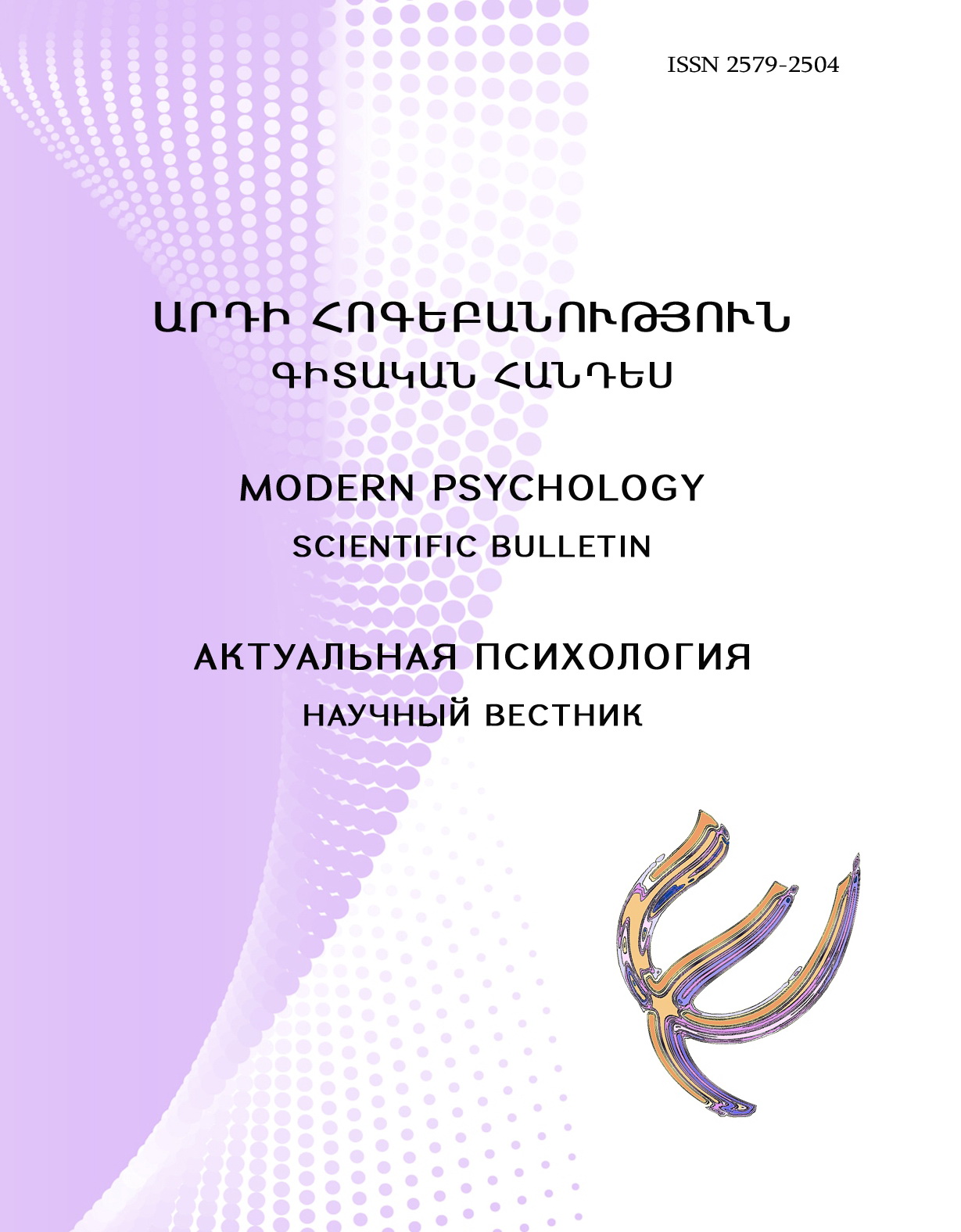SPECIFICS OF THE TRINITARIAN PRINCIPLE IN SOME MODERN THEORIES OF PSYCHOTHERAPY (IN THE CONTEXT OF TRANSCENDENTAL PSYCHOLOGY)
DOI:
https://doi.org/10.46991/SBMP/2023.6.1.068Keywords:
anisotropic relations, psychotherapy, transcendental psychology, trinitarian principle, homogeneityAbstract
The principle of trinitarity is one of the fundamental principles of transcendental psychology, implementing the structural and functional features of this approach. Based on the analysis of the manifestations of “nothing” into “something”, an attempt was made to prove the need for the presence in the dyad of anisotropic elements of the mental process of the third component, without which it is impossible to imagine the generation of the perception process (as well as any mental process), thus supplementing the transcendental principle formation of anisotropic ratios. An important role in this triad is played by homogeneity, which includes two anisotropic sides.
When describing the structure and processes of the psyche, many theories of psychotherapy follow the trinitarian principle, in particular, behaviorism, in which the author (B. Skinner) believed that in order to understand and correct human behavior, it is enough to deal (work) only with anisotropic sides (stimulus-response), ignoring the third party between them - the side ("black box"). However, as the history of the development of psychology has shown, replacing the dual model of behavior with a trinitarian one that takes into account the content of the "black box" significantly increases the possibilities of describing, explaining and regulating human behavior. E. Bern's transactional analysis is characterized by the presence of three ego states: Parent, Child and Adult. Each ego state represents a special pattern of thinking, feeling and behavior. In analytical psychology K.G. Jung argues that the soul is made up of three separate but interacting structures: The Ego, the Personal Unconscious, and the Collective Unconscious. In psychoanalysis, Z. Freud first applied a topographic model of personality. According to this model, three levels can be distinguished in mental life: consciousness, preconscious and unconscious. In the early 1920s, Freud revised his topographical model of mental life and introduced three main structures into the anatomy of personality: It (Id), I (Ego), and Super-I (Super-Ego). The given trinitarian model of personality is an effective "working" system that regulates emotions and behavior of a person.
References
Erickson M.H. The Collected Papers of Milton H. Erickson on Hypnosis. Nature of Hypnosis and Suggestion – N.Y. 1980. Vol. 1. – 2647 p.
Naghdyan R.M. Metafizikakan hogebanutyan aknarkner. Yer., hrat. «Nairi», 2013. - 192 ej:
Баранцев Р.Г. Становление тринитарного мышления /. – Ижевск : РХД, 2005 . – 124 с.
Берн Э. Трансакционный анализ в психотерапии. М.: Эксмо, 2009. – 416 с.
Гинзбург М.Р., Яковлева Е.Л. Эриксоновский гипноз: систематический курс. – М.: Московский психолого-социальный институт, 2008. – 312 с.
Зиглер Д., Хьелл Л. Теории личности. – 3-е изд. – СПб.: Питер, 2009. – 607 с.
Лейбин В.М. «Словарь-справочник по психоанализу». / ст. «Амбивалентность». М.: АСТ, 2010. – 956 с.
Мамардашвили М. Картезианские размышления. М.: Изд. «Прогресс», 1993. – 352 с.
Миракян А.И. Основания трансцендентальной психологии восприятия. // А.И. Миракян и современная психология восприятия: Сборник материалов научной конференции (30 ноября 2010 г.) / Под общ. ред. Н.Л. Мориной, В.И. Панова, Г.В. Шуковой. - М.: УРАО «Психологический институт», 2010. С. 61-89.
Нагдян Р.М. Метафизический подход к методологии исследования психического отражения реальности. // Дисс. доктор. псих. наук. Ер., 2015. – 305 с.
Новейший философский словарь (гл. науч. ред. А.А. Грицанов) / ст. «Амбивалентность». Минск, 1999. - 896
Опрятная О.Н. Тринитарный подход как методологическое основание управления сложностью. Социология: методология, методы и математическое моделирование (Социология: 4М). 2005. № 21. С. 29-50.
Панов В.И. Экопсихология: Парадигмальный поиск. — М. ; СПб. : Психологический институт РАО; Нестор-История, 2014. — 304 с.
Принципы порождающего процесса восприятия. Под. ред. А.И. Миракяна. М., 1992.-223 с.
Фрейд З. Толкование сновидений. Мн.: ООО «Попурри», 2000. – 576 с.
Фрейд З. Я и Оно. Сборник, СПб.: изд. Азбука-классика, 2006. – 288 с.
Юнг К.Г. Структура и динамика психического. М.: «Когито-Центр», 2008. - 480 с.
Downloads
Published
Issue
Section
License
Copyright (c) 2023 Gor Yesayan

This work is licensed under a Creative Commons Attribution-NonCommercial 4.0 International License.



